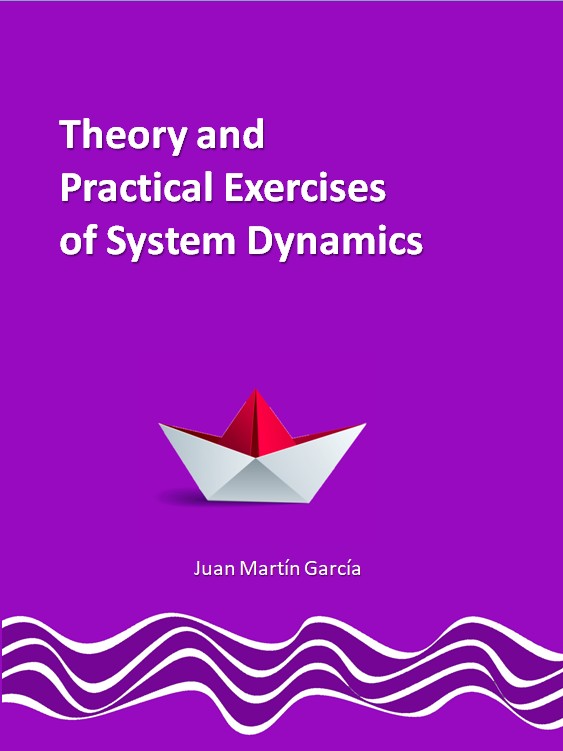
ISBN 84-609-9804-5
Theory and Practical Exercises of System Dynamics
by
Juan Martín García
As the complexity of our world increases systems thinking is emerging as a critical factor for success, and even survival. How then can people become skilled systems thinkers? The most effective learning experiences combine experience with reflection, theory with practice.
Traditionally, theory was taught in school and university, and experience was gained in life outside those walls. But in the world of complex dynamic systems such as a business, society, or ecosystem, everyday experience fails because the time horizon and scope of the systems is so vast-we never experience the majority of the effects of our decisions. And without relevant experience, theory is uninteresting to students.
The old ways of learning fail. When experiments in the real world are impossible, simulation becomes the main way we can learn effectively about the dynamics of complex systems. For this reason I'm pleased to introduce Juan Martin Garcia's book, Teoria y Ejercicios Practicos de Dinamica de Sistemas. Juan combines theory and practice, experience and opportunities for reflection, so that newcomers to the field can learn for themselves how complex dynamic systems work. The examples span a range of important economic and social issues, from the aging of the population in developed economies to the course of contagious diseases to the accumulation of pollutants in the environment; everyone will find some examples here of direct personal interest.
The modeling exercises guide the learner through the process of building a working simulation; students will not only learn about the issues addressed, and in the use of state of the art simulation software, but will develop skill in the modeling process.
Juan has written a delightful first introduction to the field of system dynamics and complexity, and provides a much-needed addition to the literature available.
John D. Sterman
Cambridge, Massachusetts
1. Basic
2. System Dynamics
2.1. System Dynamics
2.2. Identifying the problem
2.3. Defining the System
2.4. The boundaries of a System
2.5. The Causal Diagram
2.6. Feedback
2.7. The Limiting Factor
2.8. The Key Factors
2.9. Classification of Systems
2.9.1. Stable and Unstable Systems
2.9.2. Hyperstable Systems
2.9.3. Oscillating Systems
2.9.4. Sigmoidal Systems
2.10. Generic Structures
2.10.1. Resistance to Change
2.10.2. Erosion of Objectives
2.10.3. Addiction
2.10.4. Shifting the Burden to the External Factor
2.10.5. Short and Long-Term Effects
3. Building a Model
3.1. Flow Diagrams
3.2. Computer Simulation
3.3. Behaviour of the Model
3.4. Analysis of the System
3.5. Weaknesses of Models
4. Practical Exercises
Environmental Area
4.1. Population Growth
4.2. Modeling the Ecology of a Natural Reserve
4.3. Effects of the Intensive Farming
4.4. The Fishery of Shrimp
4.5. Rabbits and Foxes
4.6. A Study of Hogs
4.7. Ingestion of Toxins
4.8. The Barays of Angkor
Management Area
4.9. Production and Inventory
4.10. CO2 Emissions
4.11. How to work more and better
4.12. Faults
4.13. Project Dynamics
4.14. Innovatory Companies
4.15. Quality Control
Social Area
4.16. Filling a Glass
4.17. Dynamics of a Segmented Population
4.18. The Young Ambitious Worker
4.19. Development of an Epidemic
4.20. The Dynamics of Two Clocks
Mechanical Area
4.21. The Tank
4.22. Study of the Oscillatory Movements
4.23. Design of a Chemical Reactor
4.25. The mysterious Lamp
5. Guide to Create a Model
6. Conclusion
ANNEX
I. Functions, Tables and Delays
II. Frequently Asked Questions FAQs
III. Training Courses
IV. Software
V. Bibliography
VI. Acknowledgements
|